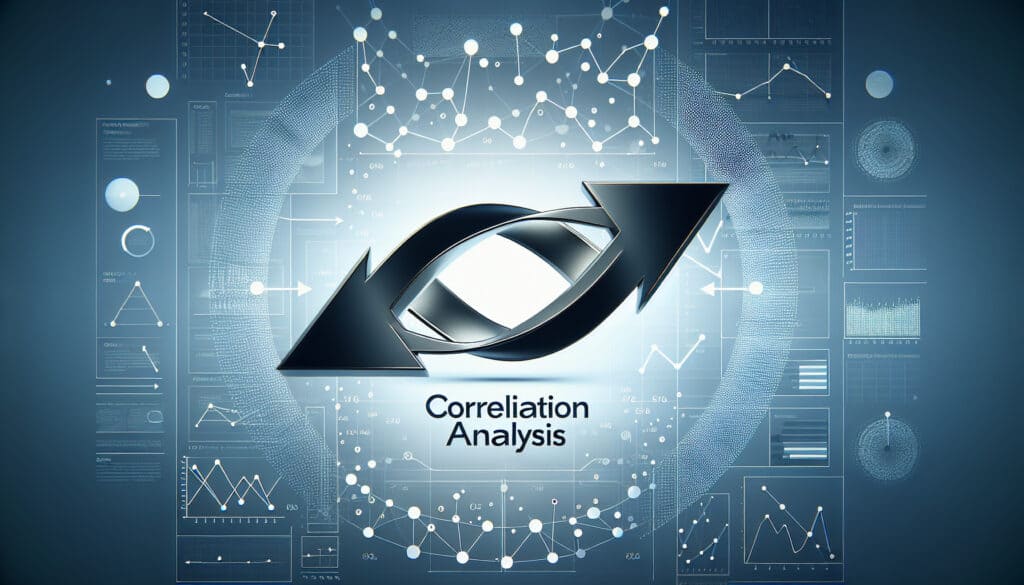Una estadística método utilizado para evaluar la fuerza y la dirección de la relación lineal entre dos variables cuantitativas.
- Metodologías: Ideación, Diseño de producto
Análisis de correlación

Análisis de correlación
- Mejora continua, Mejora de procesos, Control de calidad, Gestión de calidad, Análisis estadístico, Control estadístico de procesos (CEP), Pruebas estadísticas
Objetivo:
Cómo se utiliza:
- Esta técnica se aplica a un conjunto de puntos de datos para determinar si un cambio en una variable está asociado a un cambio en otra variable, representado por un coeficiente de correlación (r) de -1 a +1.
Ventajas
- Identifica posibles relaciones entre variables, lo que puede ser un punto de partida para investigaciones posteriores; proporciona un único número para resumir la fuerza de la asociación.
Contras
- La correlación no implica causalidad; sólo mide relaciones lineales y puede pasar por alto otras más complejas; puede estar sesgada por valores atípicos.
Categorías:
- Economía, Lean Sigma, Resolución de problemas, Calidad
Ideal para:
- Identificar la relación estadística entre dos variables, por ejemplo, entre la velocidad de producción y el número de defectos.
El análisis de correlación tiene una amplia aplicación en diversos sectores, como la fabricación, la sanidad, las finanzas y el marketing, donde la comprensión de las relaciones entre variables puede impulsar mejoras significativas. En el sector manufacturero, puede ayudar a supervisar el control de calidad correlacionando la velocidad de producción con las tasas de defectos; esto permite a los ingenieros ajustar los flujos de trabajo y reducir los defectos. En el sector sanitario, los investigadores suelen utilizar la correlación para evaluar las relaciones entre los factores del paciente, como las opciones de estilo de vida y los resultados sanitarios, orientando las iniciativas de salud pública. En el sector financiero, los analistas pueden examinar la correlación entre los indicadores económicos y los resultados bursátiles, lo que ayuda a perfeccionar las estrategias de inversión. La metodología es especialmente útil durante la fase de análisis de datos de los proyectos, en la que equipos formados por analistas de datos, ingenieros y expertos colaboran para interpretar los resultados y formular hipótesis. El inicio de estos análisis suele surgir de la necesidad de comprender patrones subyacentes en los datos, lo que lleva a los equipos a recopilar información de diversas fuentes y aplicar herramientas estadísticas para identificar correlaciones significativas. Este enfoque fomenta una cultura impulsada por los datos dentro de las organizaciones, ya que permite a las partes interesadas tomar decisiones informadas basadas en pruebas empíricas y, en última instancia, identificar oportunidades de innovación y mejora en diversos contextos.
Pasos clave de esta metodología
- Seleccione las variables de interés para el análisis.
- Calcula el coeficiente de correlación (r) utilizando programas o herramientas estadísticas.
- Interpreta el coeficiente de correlación para determinar la fuerza y la dirección de la relación.
- Realice pruebas de hipótesis para evaluar la importancia de la correlación.
- Examina el diagrama de dispersión para evaluar visualmente la relación entre las variables.
- Considere los posibles factores de confusión que puedan influir en la relación.
- Investigar las relaciones no lineales si los resultados iniciales sugieren una correlación.
- Documente los resultados, incluidos el coeficiente de correlación y los niveles de significación.
Consejos profesionales
- Utilizar software estadístico avanzado para validar los coeficientes de correlación y mitigar los riesgos asociados a correlaciones espurias.
- Incorpore variables de control a su análisis para aislar el efecto de la variable independiente principal sobre la variable dependiente.
- Considere la posibilidad de utilizar un enfoque de ventana deslizante para los datos de series temporales con el fin de observar cómo cambia la correlación a lo largo de diferentes intervalos de tiempo.
Leer y comparar varias metodologías, recomendamos el
> Amplio repositorio de metodologías <
junto con otras más de 400 metodologías.
Sus comentarios sobre esta metodología o información adicional son bienvenidos en la dirección sección de comentarios ↓ , así como cualquier idea o enlace relacionado con la ingeniería.
Historical Context
1962
1970
1972
1980
1980
1986
1986
1960
1963
1970
1980
1980
1980
1986
1987
(if date is unknown or not relevant, e.g. "fluid mechanics", a rounded estimation of its notable emergence is provided)















Publicaciones relacionadas
Cuestionarios sobre molestias musculoesqueléticas
Pruebas multivariantes (MVT)
Análisis de regresión múltiple
Sistemas de captura de movimiento
Método MoSCoW
Prueba de la mediana de Mood